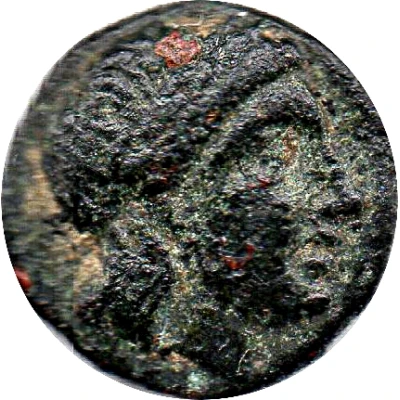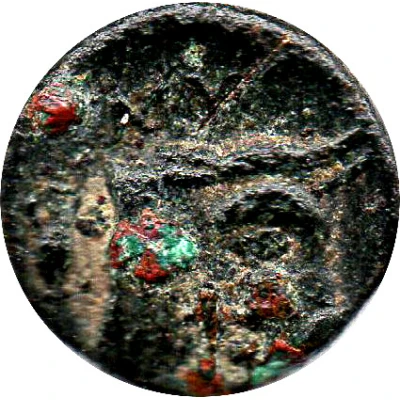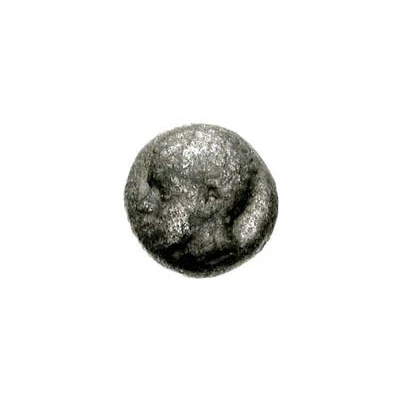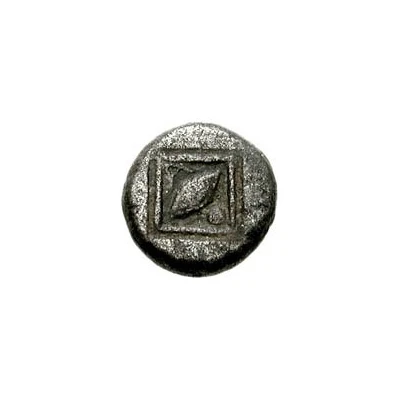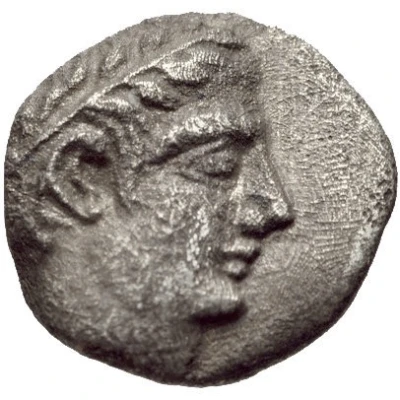
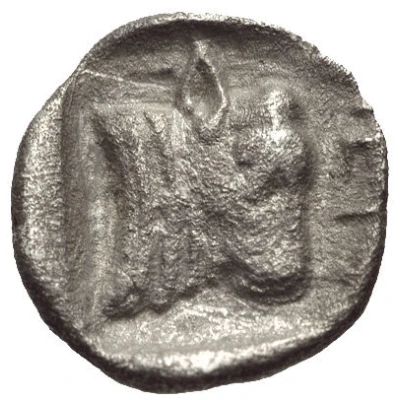

© Classical Numismatic Group, Inc.
Hemiobol 440 BC - 400 BC
| Silver | 0.26 g | 8.0 mm |
| Issuer | Mytilene (Lesbos) |
|---|---|
| Type | Standard circulation coin |
| Years | 440 BC - 400 BC |
| Value | Hemiobol (1⁄12) |
| Currency | Drachm |
| Composition | Silver |
| Weight | 0.26 g |
| Diameter | 8.0 mm |
| Shape | Round (irregular) |
| Technique | Hammered, Incuse |
| Demonetized | Yes |
| Updated | 2024-10-10 |
| Numista | N#179345 |
|---|---|
| Rarity index | 100% |
Reverse
Calf’s head right within incuse square
Interesting fact
The Hemiobol coin was used as a form of currency in ancient Greece, specifically in the city-state of Mytilene on the island of Lesbos. It was made of silver and weighed approximately 0.26 grams. Despite its small size, the Hemiobol was an important coin in ancient Greece, as it was used to purchase small items and was also used as a form of payment for workers. The coin's design featured the head of a goddess, possibly Demeter or Persephone, on one side, and a grain ear on the other. The Hemiobol coin was used for over a century, from 440 BC to 400 BC, and its use spread beyond Mytilene to other parts of ancient Greece. Today, the Hemiobol is a rare and valuable collector's item, providing a glimpse into the economic and cultural practices of ancient Greece.
